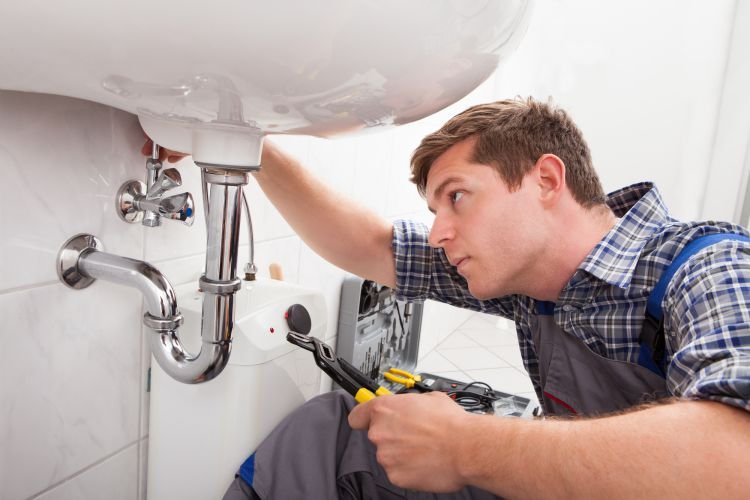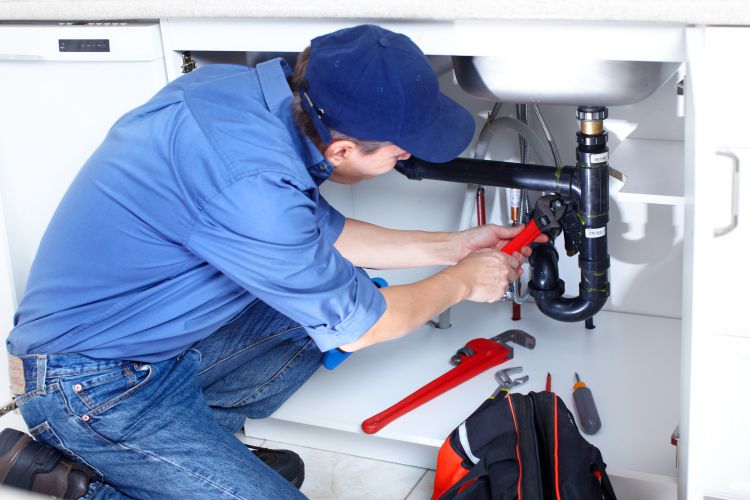 Water leakages can overwhelm homeowners. If you don’t work on them as soon as you discover them, they can become a nuisance. For one, the leakages might ruin your flooring, and changing the floors is another added expense.
Water leakages can overwhelm homeowners. If you don’t work on them as soon as you discover them, they can become a nuisance. For one, the leakages might ruin your flooring, and changing the floors is another added expense.
Luckily, you can quickly tell when they occur. For instance, if your house has some mushy smell or you catch sight of some mold, it’s evident there could be some trouble with the plumbing system.
Therefore, dealing with water leaks is essential as it helps avoid potential damage to your home. Here’s how to deal with water leaks on the plumbing network:
1. Asses The Type Of Leakage
Before you bring out the toolbox to work on the leakages, you should assess the type of leakage problem. You can use your water meter to check for possible leakages. If you’ve shut all water outlets and the meter still runs, it indicates a leakage. When reading your meter, consider using a low-flow indicator. It’s in the shape of a triangle, star, or gear. If the indicator is still spinning, you can confirm that you have a water leak.
After confirming the possibility of a leak, it’s best to narrow it down to the kind of leak. It’s so because all leakages aren’t dealt with the same way. Some require experts and professional plumbers, while others can be easily fixed in a D-I-Y project.
Below are three types of leakages:
- Pinhole Leaks: They’re a minor type of leakage. However, you shouldn’t underestimate them because they might indicate a bigger corrosion problem, which can have a long-term effect on your plumbing system network.
- Moderate Leaks: These leak more water than the pinholes and can be easier to detect.
- Gushing Leaks: They have more pressure and should be addressed immediately.
Often a leakage starts as a drop you can quickly fix by putting a bucket under the hole. Before long, the volume of the water increases, as there could be potential damage to the pipes. Assessing the type of leakage helps you decide on the most appropriate way to deal with the issue.
If the leakages are recurrent and fixing them by yourself isn’t working, it’s high time to call a plumber. Note that they have better experience and expertise in working on plumbing issues. As such, they’re better positioned to work on them. If you live around the Liverpool area, you can find experienced plumbing specialists for all your plumbing network issues.
2. Shut The Faucets
Once you decipher any plumbing system issues in your home, shutting the taps and faucets is best. Note that running water increases your bills. After spotting where the leakage is, you can turn off the taps to reduce water spilling in your house. It helps drain the pipes, thus, giving you an easy time to work on the leakages.
Especially if it’s a toilet leak, shutting the water from the main valve will be more appropriate. The main valve’s location is usually three to five meters from the main water inlet, bringing water to your house.
3. Fix The Leakage
After diagnosing where the leakage is coming from, you should address the situation. Note that it’s essential to find a concrete solution to the leakage. If you need help with what to do, you can seek help from your plumber. For instance, if you have a leakage issue with the pipes attached to your wall system, it’s best to seal the leakage entirely, as it could result in more maintenance problems.
On that note, you’d want to consider some essential tools you can use when fixing a leakage, such as:
- Duct tape
- Rubber pipe connectors
- Epoxy compounds
- Pipe clamps
- Repair sleeves
Using the right tools is essential to work on the leaks. This way, you reduce the chances of causing more damage to the pipes. As indicated earlier, fixing a leakage depends on the type. Thus, ensure you have the proper procedure, and you’ll be good to go.
 4. Work On The Repairs
4. Work On The Repairs
After controlling the water flow, it’s best to start working on the repairs. If the leakage was severe, it might have caused some damage to the walls and the floor. Check the damage and embark on repairing the damaged areas.
You should tear your wall down and replace the drywall. If the water has flooded your floor, you must disinfect and clean it thoroughly. Additionally, you can hire restoration professionals to handle water damage around the home.
5. Install Leak Detectors
Maintaining your plumbing systems helps you stay ahead of leakage issues. As such, it’d be best to install a leak detector. A leak detector could be an appropriate and helpful installation if your pipes are prone to leakages. They work efficiently and detect water leaks before they get out of hand and wreak havoc in your home.
Conclusion
Dealing with leakages immediately after you spot them goes a long way. If you leave the leakages unattended, you might have to deal with more maintenance costs and repairs. Therefore, address them as quickly as possible. You can also find out the cause of the leakage to prevent future disasters. Remember to call your plumber to check the plumbing network if there are recurrent leakages issues.
Dealing with a water leak in your plumbing network can be daunting, requiring swift and effective solutions to prevent further damage. It’s crucial to understand the source of the leak and the best methods for repair. For expert advice and professional plumbing services that ensure your network is fully restored, check that for a thorough assessment and reliable solutions tailored to address and rectify any plumbing issues you may encounter.




